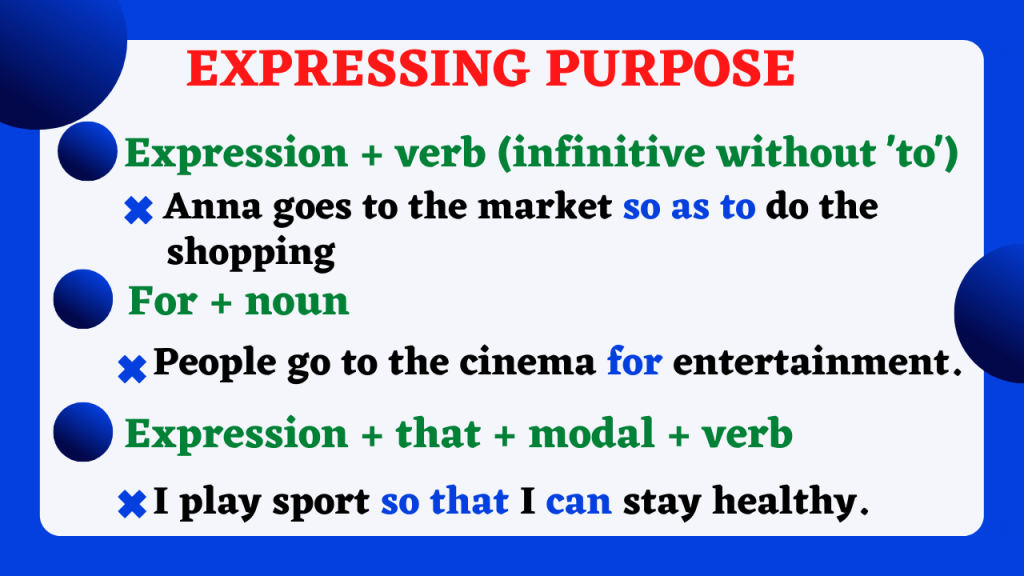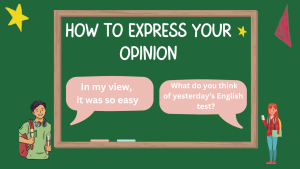
Introductory notes about expressing purpose
The term “purpose” designates an aim or objective for which you work and strive to achieve. In other words, in expressing purpose, we always try to answer the question of why we do something, or what our intention for doing that is. For example: Why do you go to the market? The answer to this question is your purpose or the reason for which you go to the market. You can say: I go to the market in order to buy vegetables. So your purpose is buying vegetables.
The more formal way to express purpose in the affirmative form is to use so as to, in order to, and to+the bare infinitive form of the verb; i.e., the infinitive without the word “to”. For instance, we build schools so as to educate children.
In the negative form, we place ‘’not’’ immediately before ‘’to’’ or ‘’for’’. For example, we build schools to educate children, not to entertain them.
To know more about how to express purpose, let’s study the following tables.
Using expression+infinitive to express purpose
| Expression | Example |
| to | – We build schools to educate children, not to entertain them. – They listen to podcasts to improve their listening skills, not to enjoy themselves. |
| So as to | – We build schools so as to educate children, not to entertain them. – They listen to podcasts so as to improve their listening skills, not to enjoy themselves. |
| In order to | – We build schools in order to educate children, not to entertain them. – They listen to podcasts in order to improve their listening skills, not to enjoy themselves. |
Expressing purpose using subject+modal+bare infinitive
| Expression | Example |
| So that | – She is learning English so that can talk to tourists. – She is exercising so that she will not be obese. |
| In order that | – She is learning English in order that can talk to tourists. – She is exercising in order that she will not be obese. |
Using for+gerund (-ing form) or noun to express purpose
| Expression | Example |
| For | – He reads books for pleasure – This activity is designed for entertaining students. – All these lessons are designed for explaining how to learn foreign languages. |
Exercise
Rewrite the following pairs of sentences using the expressions between parentheses
- He opened the window. He wanted to let fresh air in. (in order to)
- I took my camera. I wanted to take some photos. (so that)
- He studied really hard. He wanted to get better marks. (so as to)
- Jason learns Chinese. His aim is to work in China. ( to)
- I’ve collected money. I will buy a new car. (so that)
- Many people left Turkey in the 1960s. They wanted to find jobs in Germany. ( in order that)
- She attends a course. She wants to learn chess. (to)
- Linda turned on the lights. She wanted to see better. (so that)
- I will come with you. I want to help you. (in order to)
- We are going to the cinema. We will watch a horror film. (for)
- You must take your umbrella so that you won’t get wet. (in order to)
- He waited at the counter. He wanted to see her. (in order that)
- We all put on our coats. We were feeling cold. (so that)
- He took off his shoes. He did not want his parents to hear him. (in order that)
- I didn’t drop in at your home last night. I didn’t want to disturb you. (for)
- He destroyed all proof against him. He did not want to be discovered. (so as to)
- I have come. I’d like to give you a piece of advice. (to)
- I turned on the radio. I wanted to listen to the news. (so that)






